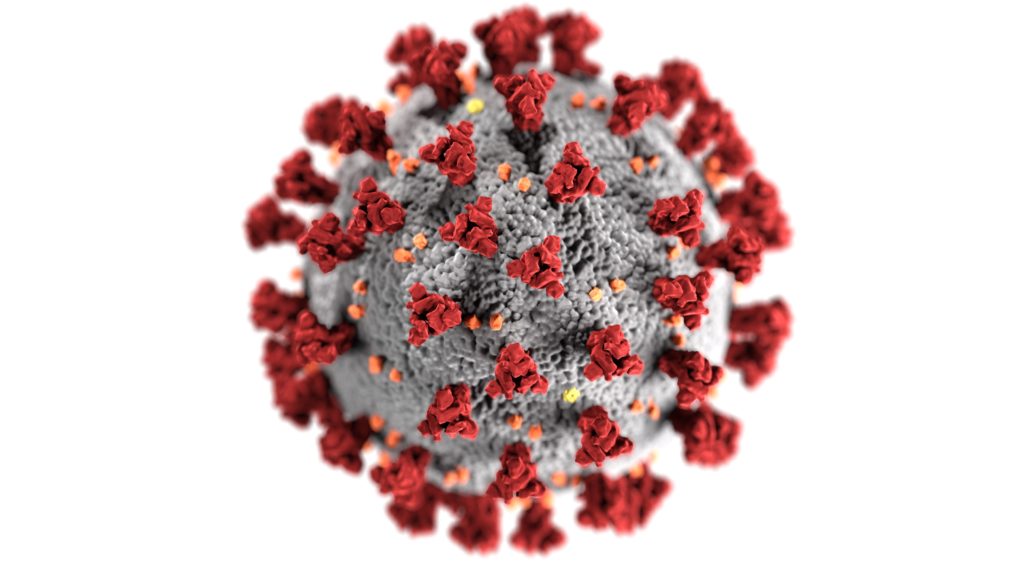The last thing you want to see is mold in buildings and in your offices. But, as far as mold growth is concerned, things have only gotten worse due to the coronavirus pandemic. Many buildings and offices have been left unoccupied and vulnerable to mold. Days have become weeks and weeks have become months. Mold can cause a number of health issues for you and your business.
The Coronavirus shutdown has caused a spread of mold in local businesses and shops. Mold grows due to excess and lingering moisture in an area. It’s important to make sure your business is free of mold when returning back after the shutdown. It can cause a multitude of issues for the physical structure of the building along with health issues for you and your employees. At Restore Remodel Renew, we want to make sure your business is mold-free and ready to re-open.
How Mold Affects Buildings
Mold can be a structure’s worst enemy. One overlooked leak or puddle can create a number of issues for a business. Mold grows on building materials and is a result of moisture. Moisture can be present from windows, pipes, roofs, leaks, or from other reasons. Mold can also grow on ceilings, wallpaper, drywall, fabric, carpets, and ceiling tiles. This can cause a multitude of problems, physically and structurally.
The Coronavirus shutdown has left thousands of offices and shops unoccupied and empty. With rain and other weather conditions, there is a chance that mold may have begun to grow. It can take days, weeks, or months for mold to grow. This varies from location to location. If the mold in a building is left untreated, it can actually result in structural damage and other more severe problems. This is why it’s highly recommended for a professional like Restore Remodel Renew to help you with your efforts. We’ve put together a list of things to look out for when returning to your business after the coronavirus shutdown.
The Effects of Mold On People
Mold not only affects the structural integrity of a building (over time) but it can also affect people if left untreated. People who have asthma or other respiratory conditions are extremely vulnerable and should steer clear of buildings with mold. Additionally, those with mold allergies or weakened immune systems should also refrain from buildings with mold in them. Several common symptoms can appear due to untreated mold. They can affect everyone in the building, regardless of whether you are allergic or have asthma. These symptoms include:
- Dry cough
- Sore throat
- Skin rashes
- Sinusitis
- Wheezing
- Red watery eyes
- Runny nose (or blocked nose)
Ways to Minimize Mold Risk After Coronavirus Shutdown

You can take certain precautions when making your way back to your office after the coronavirus shutdown. It’s important to follow these steps closely to avoid mold build-up and worse problems in the future. We understand that the coronavirus shut down has been tough on everyone, let’s not make it even harder. Follow these steps and guidelines for a safe and clean reopening.
1. Maintain Low Humidity
In order to avoid mold, you want to maintain indoor humidity as low as possible (nothing higher than 50% when measured by a humidity meter). Building managers should consider continuous monitoring of humidity with a digital hygrometer. This may idea for daily checking of the building’s temperature
2. Buildings Should be Assessed for Mold or Moisture
When returning to work, it is recommended to have a building checked out for possible leaks, moisture, and mold. (A trained team of professionals like our team here at Restore Remodel Renew can help you with the process!) We’re can recognize dampness and mold by accessing the smell and look of the area. We’ll make sure to find the source of the problem.
If mold or dampness is spotted, it’s important to find the source and plan on remediation. All remediation effects should be done before the building is reoccupied. Make sure to have the mold taken care of before planning to work again.
3. ‘Flush Out’ Period and Setting up for the future
After the mold has been confirmed or not, and once remediation has been done, the building’s HVAC system will be turned one. This system is used completely turned off for a prolonged amount of time. Once the mold is gone or once the inspection is completed, the HVAC system will be turned on for 48-72 hours minimum. This is called the ‘flush out’ period – with it, there are some things to keep in mind during the process:
- During the ‘flush out’ period make sure to open outdoor air dampers to the max setting.
- If you notice a moldy or musty smell and detect mold after the ‘flush out period’ is over, this may be a sign of mold that was not spotted earlier. At this point, you would conduct remediation again.
- The ‘flush out’ period should last until there are no more odors apparent.
- The HVAC filters should be inspected and replaced with new or clean filters if necessary.
4. Routine Checks
Luckily, by the time you’ve gotten to this step, your office should be up and running. With this in mind, it’s important to continue weekly or monthly checks to make sure the HVAC system is running properly. During these checks, it will be determined whether a filter needs to be replaced or checked. These checks may start as weekly checks but will gradually work down towards monthly, or quarterly checks. Always remember to check the temperature and moisture of your office/building.
5. If an HVAC Inspection program is not in Place
If the building you are working at does not have an HVAC operation program in place then you should consider developing and implementing one. If nothing else, consider checking and maintaining HVAC components on a frequent basis or run some general tests.
The Importance of Making Sure Your Building is Free of Mold
We are all eager to get back to our offices, but it’s important to make sure that there is no mold in buildings or offices we work at. Mold can cause a number of problems for you, your co-workers, and the building itself. Let Restore Remodel Renew get your business up and running without mold to worry about. With years of experience, we’re ready to help you get rid of that mold today. Contact us for more information on our remediation and restoration processes.


Recent Comments